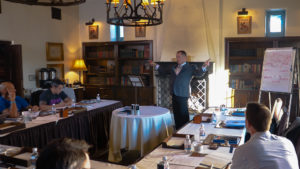I’ve been an adherent to the motto, “Leaders are readers, and readers are leaders.” This squares nicely with what is widely known as the Growth Mindset and is critical to the infinite possibilities when we accept that learning is never “done.”
When meeting anyone in a leadership position that subscribes to the notion that they don’t have time to read, I challenge that their business cannot afford for them to stagnate that way. Even if a leader is enlightened and complete, if others continue to read, learn, and grow, they will catch up or surpass them.
No one philosophy, system, book, or company has a cornerstone for creating the perfect leadership model; therefore, by committing to education, we commit to expanding, challenging, adjusting, and assessing our ideas of leadership, organization, and execution.
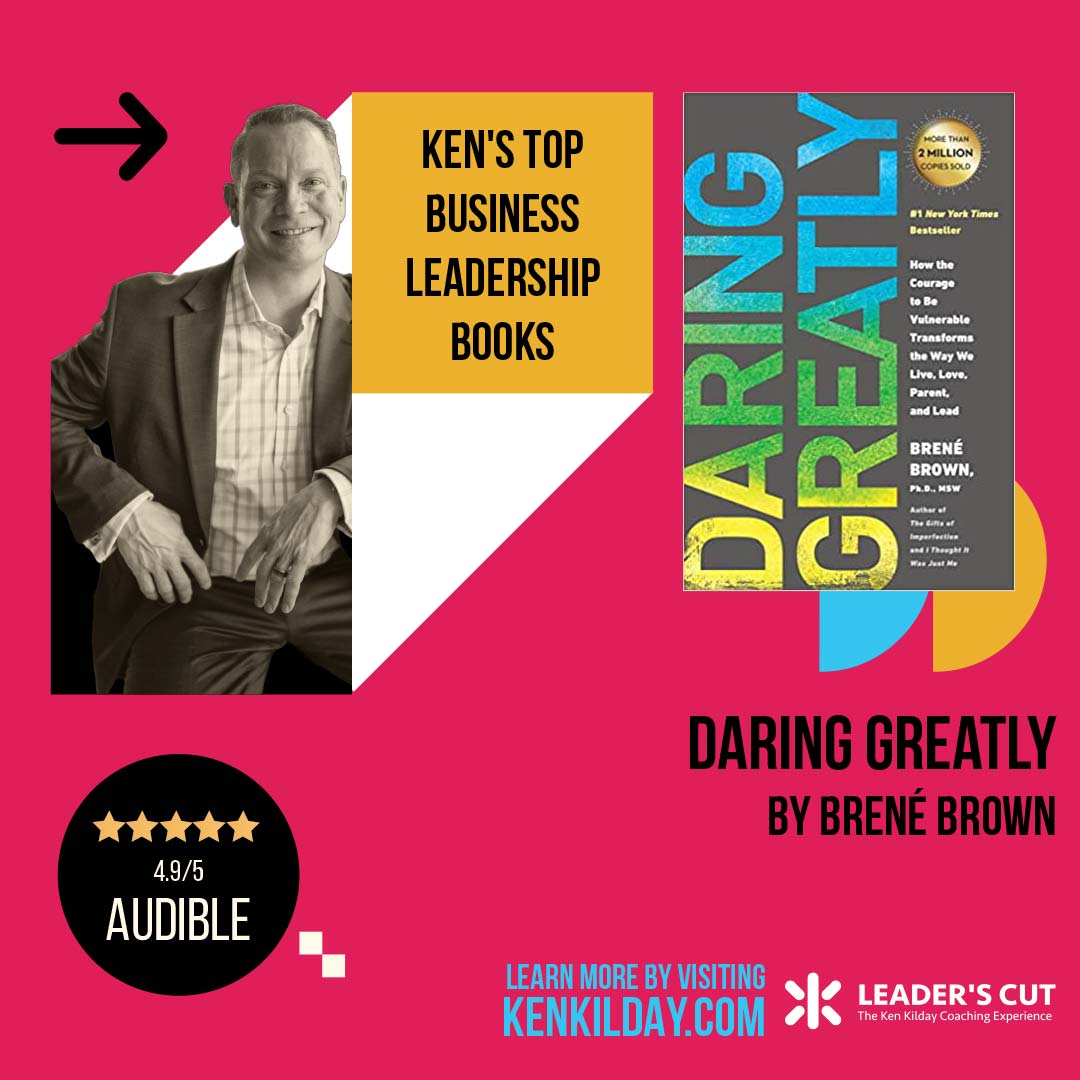
Daring Greatly By Brené Brown
Dr. Brown needs little introduction, as her viral Ted Talk on vulnerability proves. As the title of her tome references, I’d recommend reading Teddy Roosevelt’s “Man in the Arena” speech first, as it is Dr. Brown’s inspiration. In this book, she adroitly leads us through the conventional traps leaders find themselves falling into by providing techniques for having the courage to show up, be fully present, and trust when you cannot control the outcome. Daring Greatly is not about winning or losing. It’s pushing past the feelings of fear to be uncomfortable, vulnerable, and ultimately successful. Wondering what can help build environments of authenticity? Look no further.
Key Takeaways:
- Vulnerability is Power: Brown stresses that vulnerability is a great instrument for development and connection, not a weakness. She advises readers to embrace their weaknesses to build meaningful connections and boost self-esteem.
- Embrace Imperfection: Brown says perfectionism may lead to self-defeat. She advises people to accept their flaws as part of their individuality rather than hide them.
- Shame and Guilt: Shame and guilt are ubiquitous and damaging if not acknowledged and treated. Brown emphasizes self-compassion and distinguishes between shame (I am awful) and guilt (I did something wrong) to recognize and manage these emotions.
- The Importance of Wholehearted Living: The Book’s Theme: ‘Wholehearted Living’ by Brown. This means facing the world with bravery, compassion, and connection. Even amid fear and agony, it is knowing your value.
- Cultivating Resilience: This book teaches us to face life’s hardships. Brown says empathy builds shame resilience. Empathy helps us comprehend and manage shame, making us more resilient.
- The Power of Empathy: Brown claims that empathy involves both knowing and feeling another’s feelings. She contrasts compassion with empathy and discusses how empathy may restore relationships.
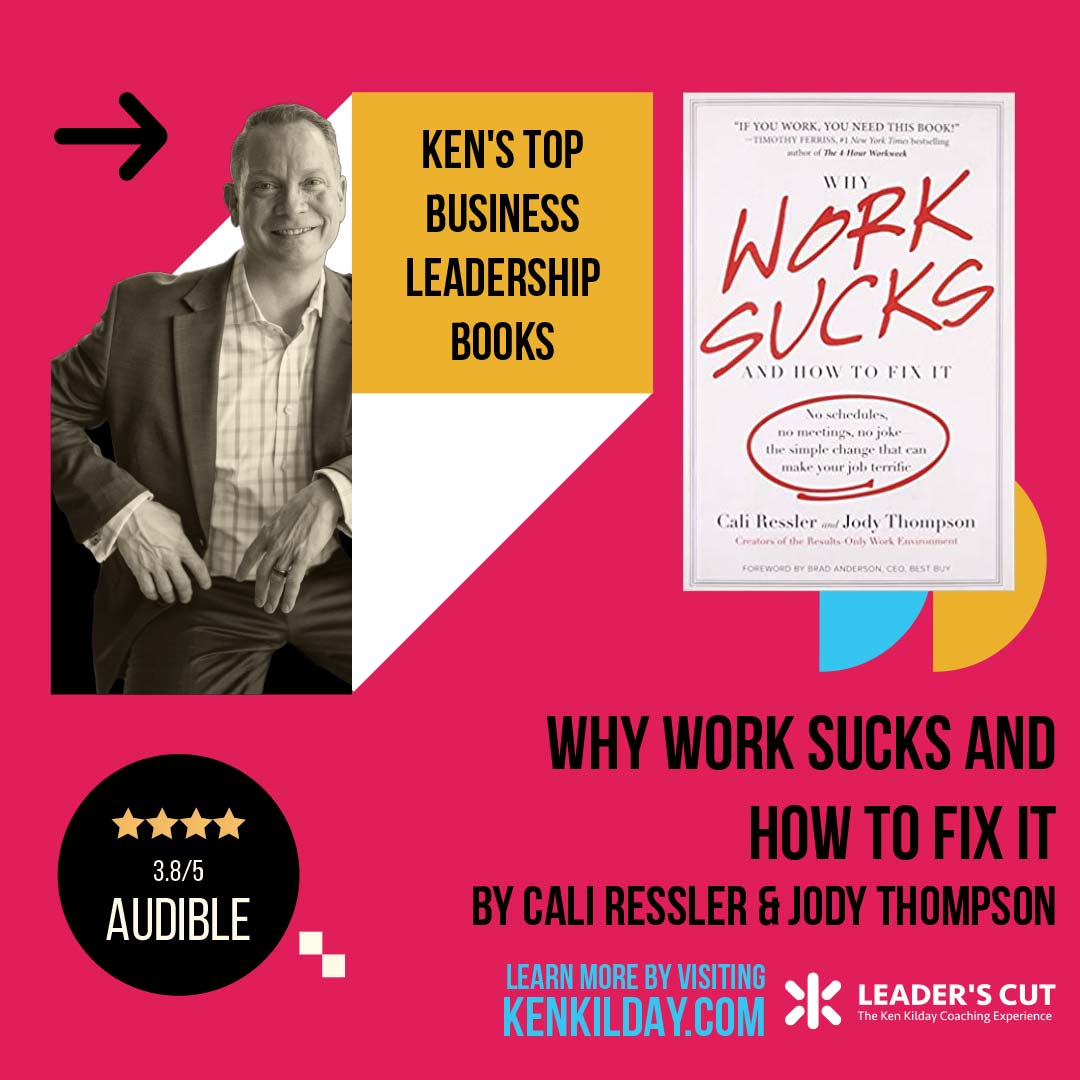
Why Work Sucks and How to Fix It by Cali Ressler & Jody Thompson
Former HR Executives Ressler and Thompson are the brain trust behind the Results Only Work Environment (ROWE). This paradigm-shifting manifesto will challenge how you think about, evaluate, manage, and lead your organization’s people/work equation. Though written many years ago, there’s no better time to introduce yourself to an entirely different approach in the era of work-at-home, hybrid, and return-to-work controversies. Blending some of the work Leader’s Cut has done helping clients hire according to their core values, imagine combining that with the notion that we manage the work rather than the team member. What are the possibilities if we focus on the result (output, outcome, accomplishment, etc.) and let go of when or where someone is doing the work?
Key Takeaways:
- Results-Only Work Environment (ROWE): The authors propose a new approach to work that they call ROWE (Results-Only Work Environment). In this approach, employees are measured by their results, not by the time they spend in the office. The focus is on what is achieved, rather than when or where the work is done.
- Workplace Flexibility: The authors challenge the traditional 9-5 work culture, arguing for a flexible work schedule that allows employees to balance their work and personal lives more effectively. They believe that this will lead to happier, more productive employees.
- No Meetings, No Mandatory Work Hours: Ressler and Thompson argue that unnecessary meetings waste time and don’t necessarily lead to productive work. They propose that meetings should only occur when truly needed. Similarly, they suggest that mandatory work hours should be abandoned in favor of a more flexible system.
- Trust in Employees: The authors emphasize that employers should trust their employees to get their work done without constant supervision or micromanagement. This shift requires a significant cultural change in many organizations, where trust and autonomy replace control and surveillance.
- Elimination of Guilt: Often, employees feel guilty about not being present in the office during traditional work hours, even if they are achieving their work objectives. In a ROWE, employees should be free from guilt as long as they are delivering results.
- Change is Possible and Beneficial: Ressler and Thompson believe that the ROWE approach can work in any business, regardless of size or industry. They provide practical advice and examples of how to implement this model, stating that the benefits include increased employee satisfaction, improved productivity, and a better work-life balance.
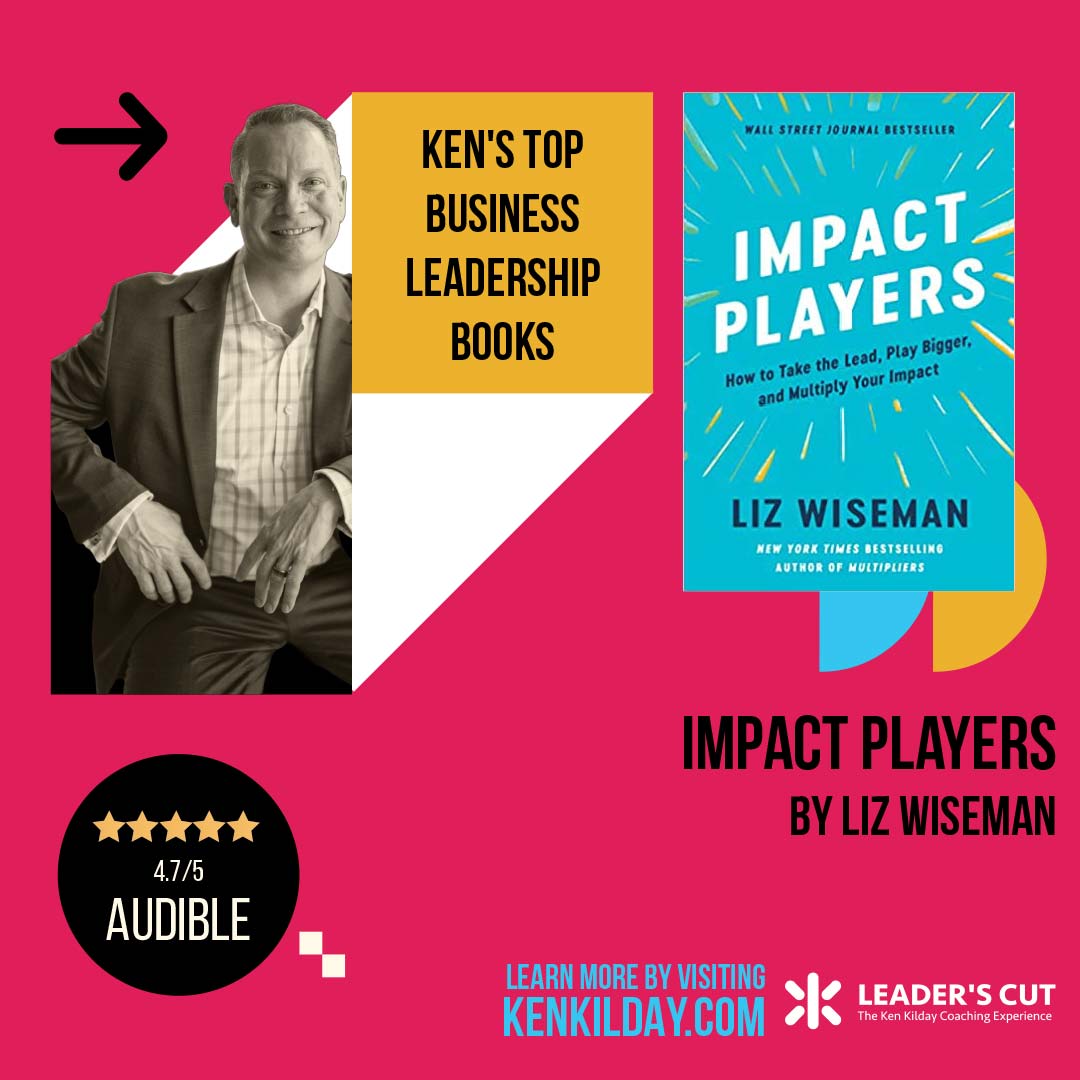
Impact Players by Liz Wiseman
Wiseman has a background that would challenge the most skepticism: she rose to executive leadership ranks and has, as they say, eaten her own cooking. Well known for her book, Multipliers, a keen look at why some leaders just seem to make everyone around them more intelligent, in Impact Players, she calls out the talent in the front-line ranks that excel. In short, she describes these impact players as those who do the needed job, step up and lead, move things across the finish line, learn/adapt to change, and make heavy demands feel lighter.
Key Takeaways:
- The Mindset of an Impact Player: Wiseman highlights the crucial role that mindset plays in becoming an Impact Player. They tend to see themselves as problem solvers and contributors rather than mere role players. This mindset pushes them to take initiative and make a significant impact in their organizations.
- Contribution, Not Just Participation: Impact Players make meaningful contributions rather than just participating. They do the work that matters most and help where the need is greatest, thereby maximizing their impact.
- Hard Work and Initiative: Impact Players are often the hardest workers. They take initiative, don’t wait to be told what to do, and don’t shy away from challenges. They often exceed expectations and are always looking for ways to improve.
- Positive Influence on Others: Not only do Impact Players perform at a high level themselves, but they also elevate others around them. They inspire their peers and superiors alike through their actions, commitment, and high standards.
- Adaptive and Agile: Impact Players display a high level of adaptability. They are agile in the face of change, always learning and willing to adjust their approach when necessary. This adaptability allows them to thrive even in uncertain and complex environments.
- Empathy and Communication: Wiseman notes that Impact Players are effective communicators and show a deep level of empathy for others. They have the ability to see situations from multiple perspectives and this, in turn, enhances their problem-solving skills and makes them valuable team members.
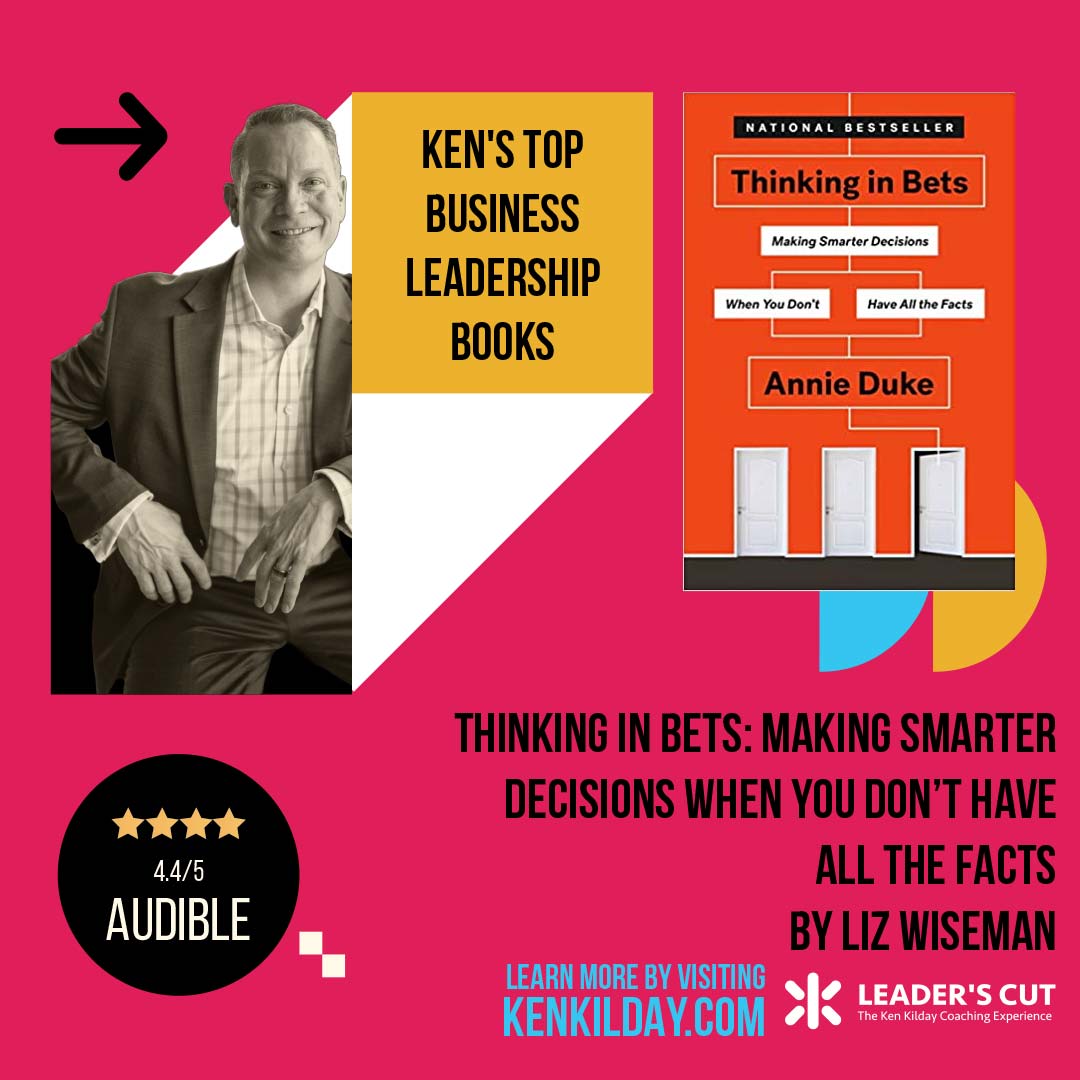
Thinking in Bets: Making Smarter Decisions When You Don’t Have All the Facts by Annie Duke
How often have you heard that life (or business) is a game of chess? Well, enter Annie Duke, professional poker player and former contestant on Celebrity Apprentice, to assert that life (and business) is a game of poker. What’s the difference? Duke explains that in Chess, all moves are known because it is a finite board with finite pieces and finite moves. Granted, the ability to see the available moves at any given moment is the skill to be developed. However, poker is more probabilistic, with multiple variables playing in tandem at any given moment. Further, she asserts that success depends on the self-awareness to know when your “win” was a function of ability, luck, or the fact that your opponent was playing poorly. Apply this to your definition of success, and perhaps you’ll see how much more about your business falls into the gray area of making a bet – sometimes good and sometimes not – than you realized.
Key Takeaways:
- Distinguish Between Decision Quality and Outcome: Duke emphasizes that good decisions can sometimes lead to bad outcomes and vice versa due to luck and uncertainty in the world. We should focus on making the best decisions we can with the information we have, rather than judging decisions purely based on their outcomes.
- Embrace Uncertainty: Decision-making involves uncertainty. It should be part of our choices, not avoided. This may help us avoid overconfidence and underestimating probable outcomes.
- Think in Bets: Duke suggests seeing choices as bets with prospective rewards and drawbacks. This makes probabilistic decision-making more sophisticated and sensible.
- Learn from Losing: Losses teach as much as triumphs. We may enhance our decision-making by evaluating why a choice failed.
- Form a Decision Group: Duke proposes assembling a ‘decision group’ of trustworthy people to question our ideas and provide various viewpoints. We may avoid prejudices, evaluate more options, and make better judgments.
- Iterative Decision Making: Decision-making abilities may improve. Duke emphasizes an iterative approach, where we learn from prior mistakes, improve our decision-making process, and make better judgments over time.
Conclusion
Have you ever wondered how an Executive Coach & Business Strategist differs from the consulting world? You can think of coaching as “done with you” and consulting as “done for you.” When Ken works with clients, they are partners on a journey that may be top of mind or comes to the forefront through your work together.
As a former Fortune 500 Executive Leader who rose through the ranks and became an entrepreneur, Ken uses his thirty-plus years of insight and lessons, along with his proprietary model, to bring simplicity, clarity, and direction to business leaders and entrepreneurs.
If you are not sure where to start, begin with a short conversation so that we can get to know each other and you can determine if there is a “there” there to move forward. No strings attached.




